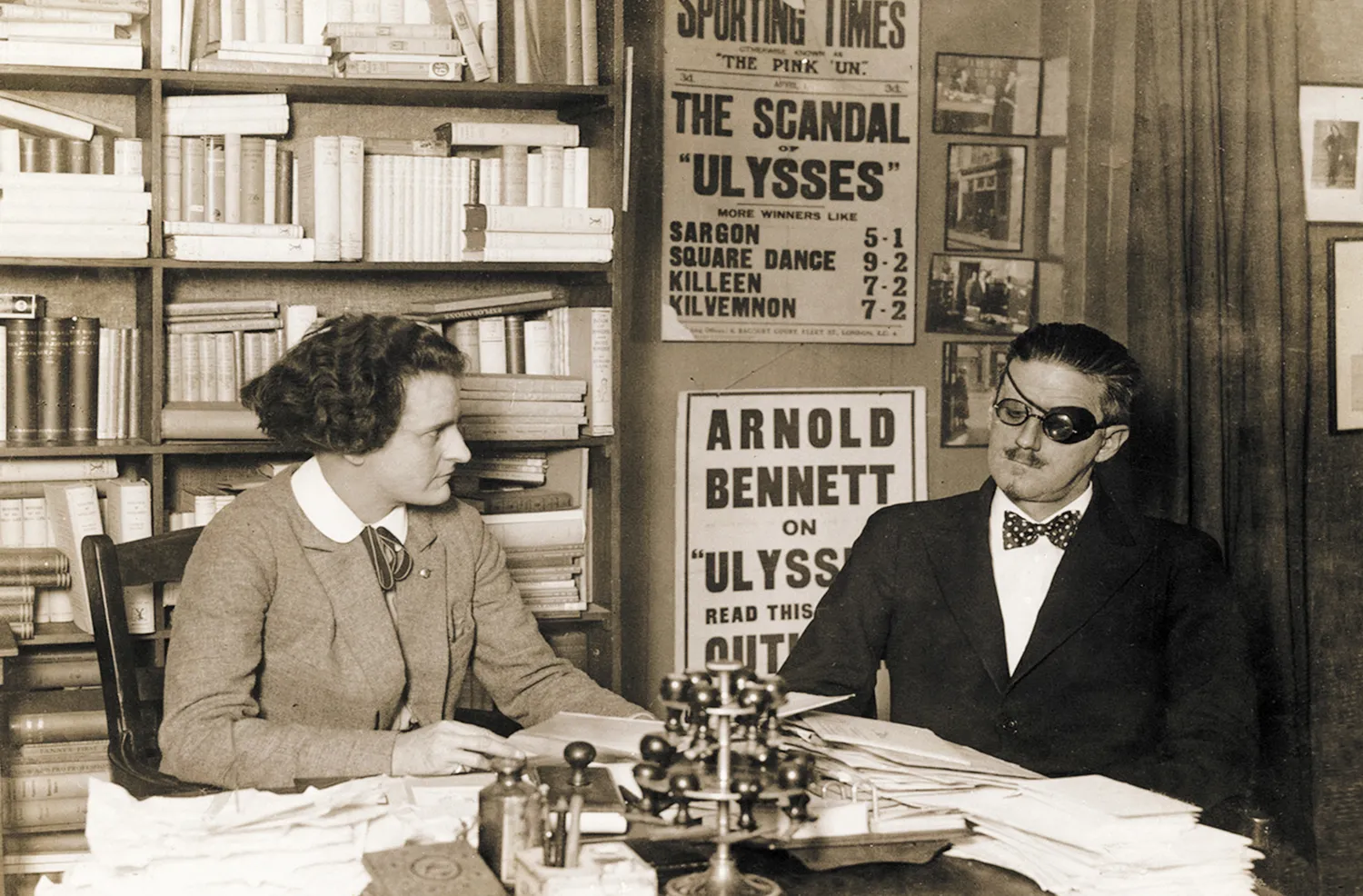James Joyce has been keeping me company. Since I first decided that I wanted to read “Ulysses” in June, he has been renting out a little space at the corner of my desk, staking his claim on a little plot in the fields of my thoughts.
We began our cohabitation with “A Portrait of the Artist as a Young Man,” and though it wasn’t an easy read by any means, Joyce was fairly amiable. But I knew that this two-week period was only the preparation for what would be the real test of our ability to exist together — or, more realistically, a real test of my ability to keep up with him. A warm-up hike for our trip up a mountain.
As soon as I finished “Portrait,” I began to look toward that massive tome on my desk, as thick as any Norton Anthology. I blocked out the month of July to read “Ulysses.” I christened it “Julysses” and wrote out my reading schedule on a sheet of paper.
“Ulysses” is divided into 18 chapters, each corresponding to an episode in Homer’s “The Odyssey,” and as the book goes on the chapters get increasingly more difficult. I began the first chapter, “Telemachus,” with all the enthusiasm and vigor of a person who is embarking on something new. It was admittedly slow going; I kept having to pause in my reading of the text to reference external footnotes, and overall this was a harder, more roundabout Joyce than the Joyce I knew from “Portrait.” But “Telemachus” is comparatively short, and I finished day one of “Julysses” feeling good.
As the first and second weeks went on, my stamina dwindled. The chapters did get harder, and longer too. The angle of the slope of this Ulyssean peak was increasing. I kept at it though — Joyce would not get the best of me, not yet.
Then, I reached chapters nine, 10 and 11: respectively “Scylla and Charybdis,” “Wandering Rocks” and “Sirens.” Those who have read “The Odyssey” know that none of these titles point to anything particularly great — these are figures and places in the classic epic which are dangerous and misleading to its hero Odysseus. Scylla and Charybdis: deadly, almost impassable sea monsters; the wandering rocks: boulders that smash ships to pieces (and which Odysseus doesn’t even try to bypass); Sirens: luring, sweet-toned deceivers. In writing these chapters, Joyce not only tries to incorporate the literal elements of these Homeric parallels into his text, but also makes them a part of his style itself. Language and narration become as labyrinthine as the Ulyssean challenges themselves. Thus the reader of “Ulysses” in a way becomes her own Odysseus, having to navigate her way through the whirlpools and traps that Joyce lays out in the text.
These three chapters proved truly impassable for me. My schedule unraveled. I delayed reading, and when I finally sat myself down and opened the book, I would get through only two pages before closing it again. “Sirens” was the last straw — the chapter attempts to stylistically imitate the musical techniques of an orchestral composition, but for me I just felt completely lost in the arbitrary sounds of the English language. Joyce was no longer a friend, or even an amiable acquaintance. He became my enemy. He actively worked against my trek to the top of the mountain. And so, halfway through our trip together, I gave Joyce up. Even when August came around, I couldn’t bring myself to get back on the trail.
As I spent the rest of my summer guiltily glancing at the unfinished “Ulysses,” I realized that the only way I would be able to get through the book was if I had some external pressure. I decided to use my flex quarter units to take the course “Ulysses and Difficulty” (ENG 185D) with Prof. Nathan Wainstein. “Ulysses” would be the only thing I would read this entire quarter. A single novel. As an English major who almost every quarter reads a few novels a week, this was an anomaly. You wanted all my attention, I told Joyce who was still smirking at me from his desk corner, now you’ll have it.
Reading this novel with my classmates helped a lot. There were still moments, of course, when I did not want to read. Moments of feeling like my ship was being smashed by Sirens. But now, instead of silently bemoaning the whole sections of the text that I did not understand, I could commiserate about it with five other people who also felt the same way. Instead of dreading the difficulty of Joyce’s stylistic parodies, I could now bring it with me to class, and through discussion, we could understand the mechanics of the difficulty as well as why it might be there in the first place. The experience of reading is an intrinsic part of understanding the text, and “Ulysses” in particular. I grew to love it for what it is.
***
When I finished reading “Ulysses” last week, I could not believe it. Four months after I first began, I was flipping over the final page and closing the book. I thought: it’s over. “Ulysses” was insurmountable, and yet it had been surmounted.
Now that the task is complete, I can see that, in a way, Joyce has been the perfect companion for quarantine, for his novel is both immeasurably expansive and immeasurably contained. Everything within “Ulysses” is part of the world of “Ulysses”; in this way, it is like a single self, with its own language, memories, tics, repetitions and emotions. It wanders, within itself, to far, far places no other text reaches. It is frustrating and difficult and often makes us feel as though we cannot go on. But sometimes, in the most unexpected moments, amid the most elusive mires and whirlpools of language, memory and allusion, it was startlingly, splendidly beautiful.
Contact Lily Nilipour at lilynil ‘at’ stanford.edu.
